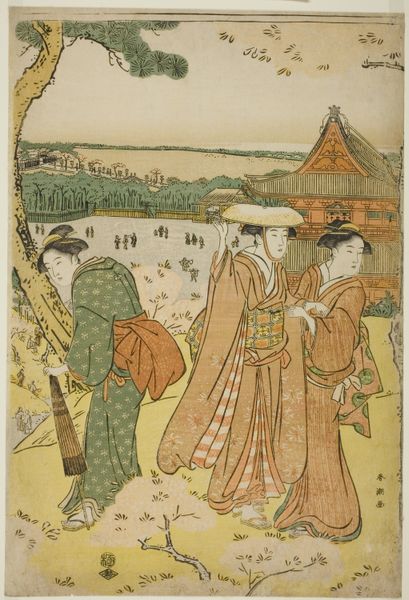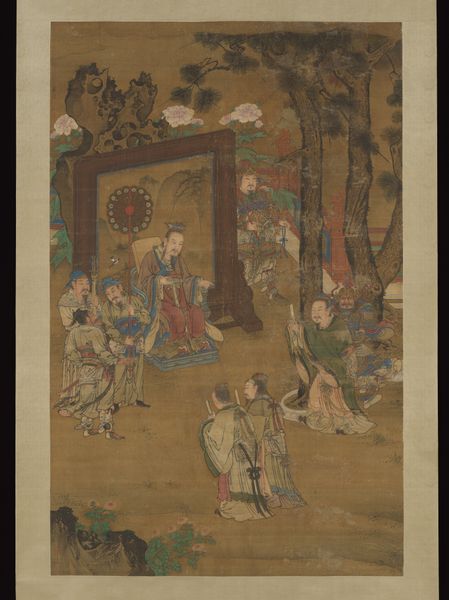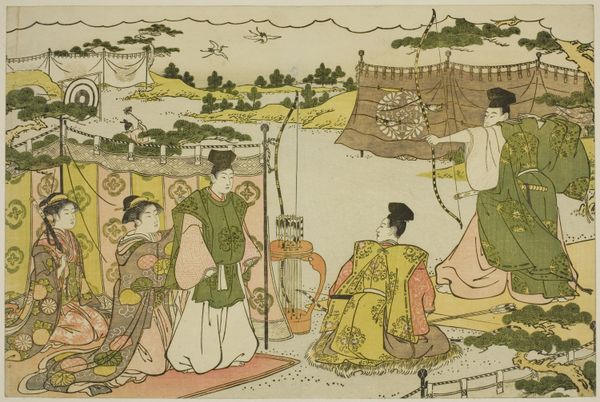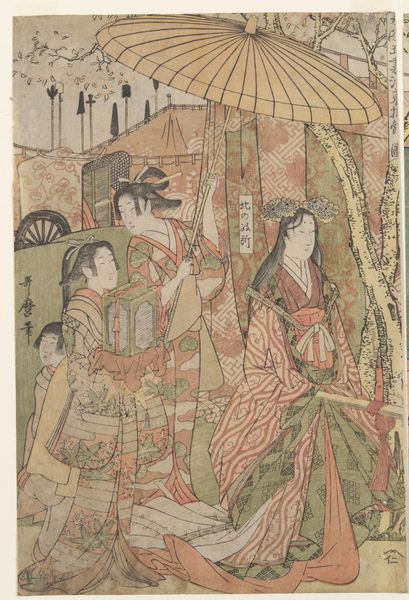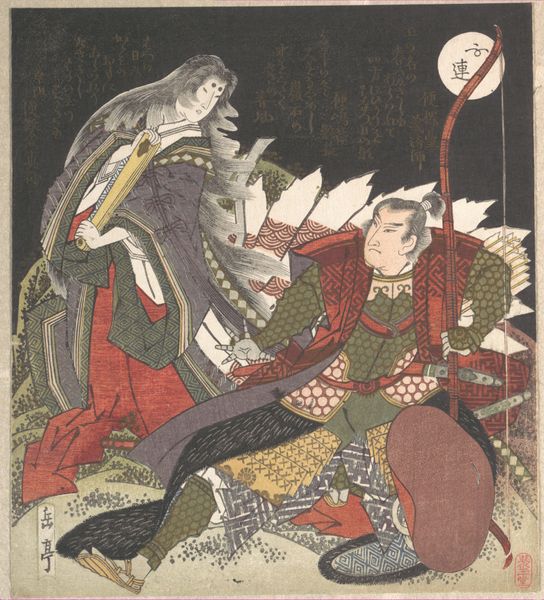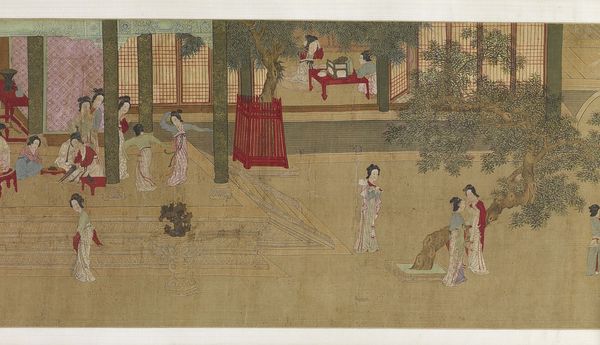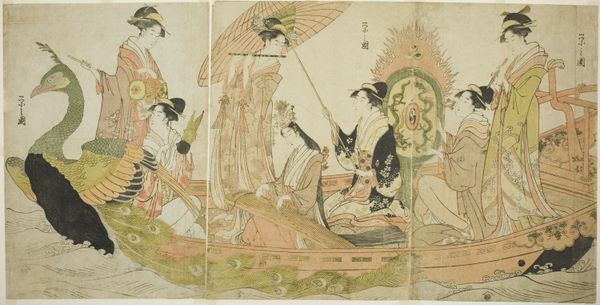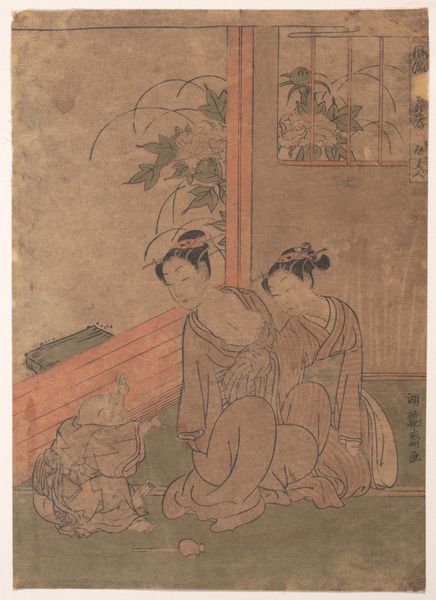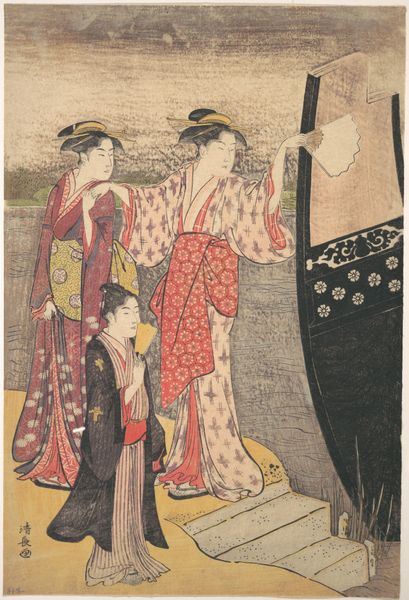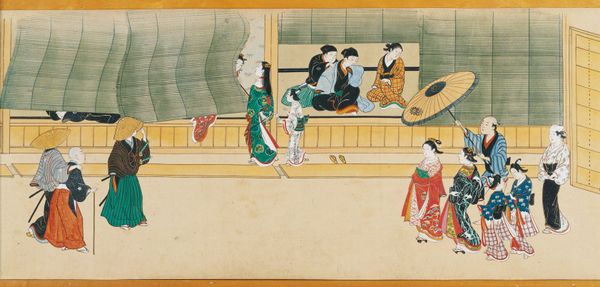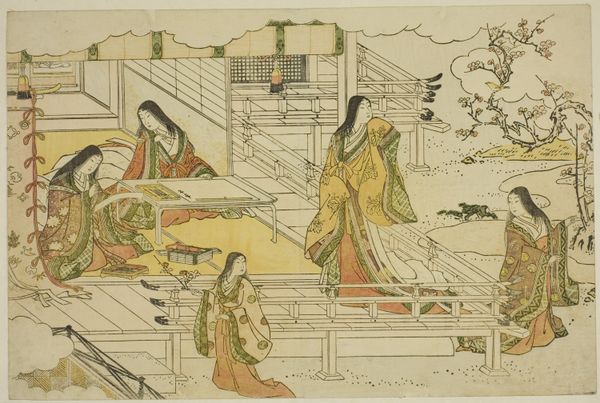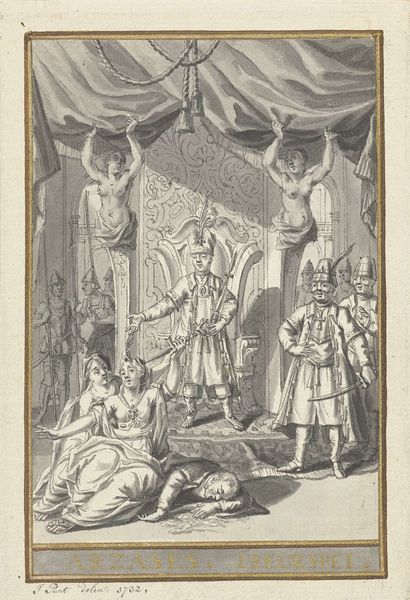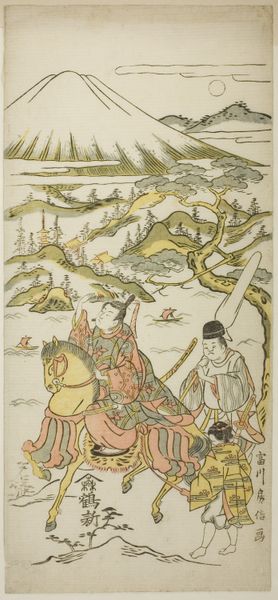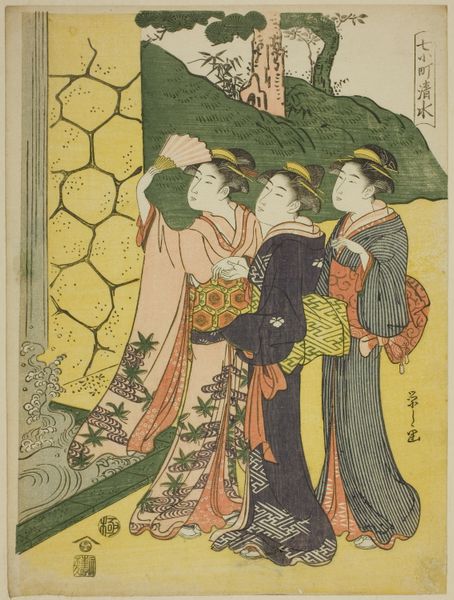
painting, watercolor
#
portrait
#
water colours
#
painting
#
asian-art
#
landscape
#
figuration
#
watercolor
#
coloured pencil
#
miniature
#
watercolor
Dimensions: 9 3/4 x 6 1/4 in. (24.77 x 15.88 cm)
Copyright: Public Domain
Editor: We're looking at "The Vilaval Ragini," a watercolor painting from around 1780, housed at the Minneapolis Institute of Art. I’m struck by how meticulously the details are rendered. What stands out to you in terms of the creation of this piece? Curator: What interests me immediately is the process of making a miniature like this in 18th-century India. Think about the labor involved: the grinding of pigments, likely from minerals and plants, the precise application with brushes probably made from squirrel tail hairs, and the highly controlled environment necessary for such delicate work. The patronage system also dictated the content and style, creating an intricate dance between artistic expression and social expectations. How does that labor and patronage influence how we value it today? Editor: That’s fascinating. So, the very materials and the process reflect a particular social and economic structure? I hadn't considered how the choice of something like watercolor over, say, oil paint, speaks to specific access and resources. Curator: Precisely! Watercolors were easily transportable, fitting for a mobile court. Consider, too, the colored pencil lines. Their fineness suggests incredible skill, but also countless hours. Who was afforded that time? How did that labor relate to their position within the court or artistic workshop? These objects often obscure the complex economic realities that allowed them to exist. Editor: So, when we look at the elegance and refinement, we also need to think about the conditions that made that refinement possible, almost like an archeological dig into art production. I’ll never see miniatures the same way again. Curator: Exactly. This way we can understand so much more than simply its aesthetic qualities. It's about unpacking layers of materiality and labor.
Comments
minneapolisinstituteofart almost 2 years ago
⋮
The central Rajasthan state of Kishangarh flourished as a painting center during the eighteenth century. Though closely tied to the Mughal court, it produced paintings with a unique figural style. Nihal Chand, a leading master of the school, is credited with creating an elegant, dignified figural type featuring the arched postures, receding foreheads, sharp noses, and elongated almond-shaped eyes associated with Kishangarh. Along with court genre scenes, popular themes of Kishangarh paintings included the allegorical portrayal of romantic love. Ladies of the harem and their princes were often rendered as the divine lovers Krishna and Radha. This painting, however, of a court lady preparing her hair and makeup with the aid of two attendants contains the explicit iconography of the Bilaval (or Vilavali) Ragini. It is, therefore, a subject based on classical Indian music rather than on court romance.
Join the conversation
Join millions of artists and users on Artera today and experience the ultimate creative platform.
